Exploring the Tomb of Idu at Giza
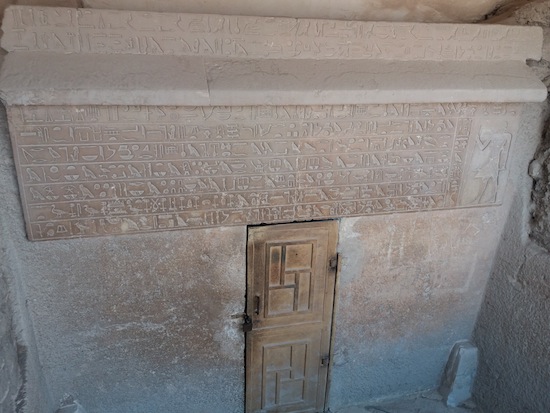
The rather unobtrusive entrance to the tomb. Like most
mastabas, its superstructure has disappeared over time.
Put on your pith helmets, Black Gate readers, because today we’re going into an ancient Egyptian tomb!
This tomb, on the Giza plateau, was built for Idu, an inspector of priests of the pharaohs Khufu and Khafre and overseer of scribes. Idu made sure the rites and rituals in honor of the departed pharaohs were done properly, and that the priests had all the equipment they needed. Idu lived in the VI Dynasty, probably during the reign of Pepi I (2332-2283 BC), a couple of hundred years after the death of these two important pharaohs. The most prominent Egyptian pharaohs had cults that lasted centuries.
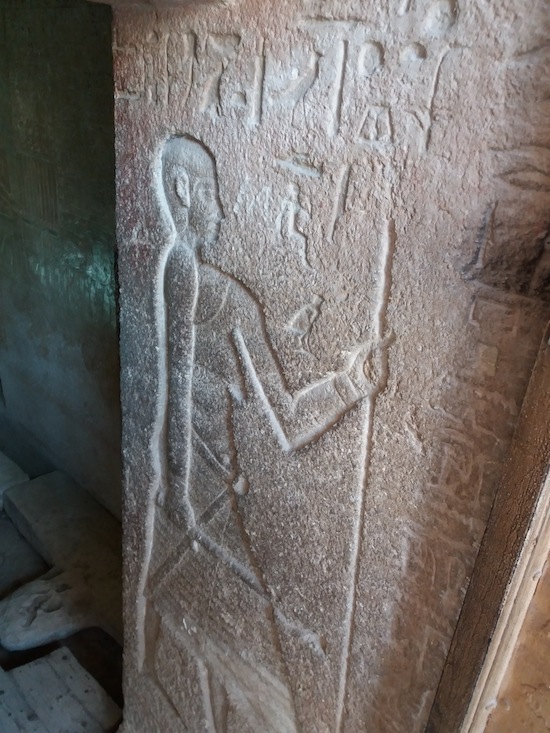
One of a pair of tomb guardians flanking the door ready to
smite the unworthy. On the western doorjamb is a curse stating,
“As for every man who shall enter this tomb, without purifying
himself as the purification of a god, one shall make for him
a painful punishment.”
The tomb of Idu is one of several mastabas found at Giza. This particular example is part of a large field of mastabas just to the east of the Pyramid of Khufu, so Idu was buried close to where he worked in the mortuary temples of Khufu and Khafre. Other mastabas can be found at other pyramid fields and elsewhere along the Nile.
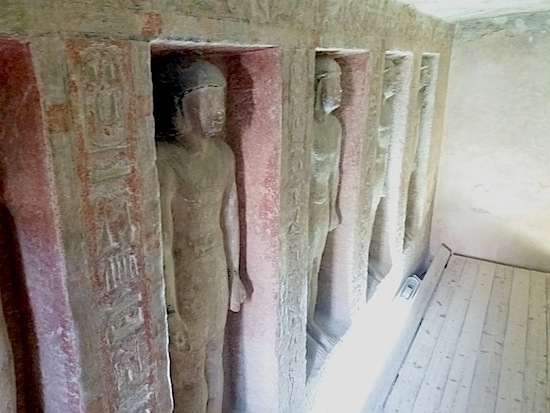
The east wall of the main chamber has a row of four statues
depicting Idu and one of his sons
I ended up using this tomb in my latest neo-pulp mystery novel because I wanted an interesting site I was personally familiar with that my readers could actually visit. I did play with history a bit, though. The mastaba was excavated in 1924 and 1925 by George Andrew Reisner, director of the Harvard University-Museum of Fine Arts, Boston, Expedition. In my novel I have it excavated in 1919 by a French archaeologist named Pierre Dupris, who is my own invention. I changed this, with no disrespect to Mr. Reisner, because I wanted it discovered by a fictitious character I didn’t mind disparaging. I’ll give Mr. Reisner the benefit of the doubt and assume he wasn’t a racist ass like Pierre Dupris!
The fact that a curse is written on the doorjamb was an added bonus, for what book about Egyptology would be complete without a curse?
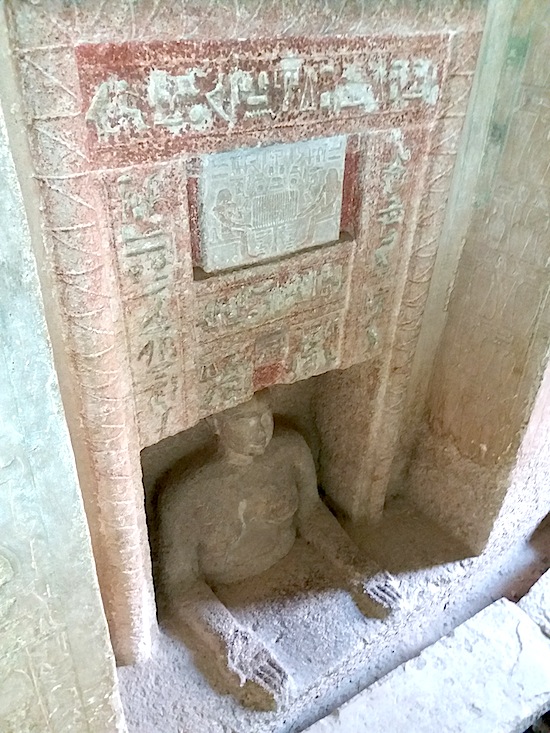
Tombs are always provided with false doors through which
the spirit can pass to receive offerings. This one, on the west
wall of the tomb, is unusual in that it has a statue of Idu
rising from the floor to take his offerings.
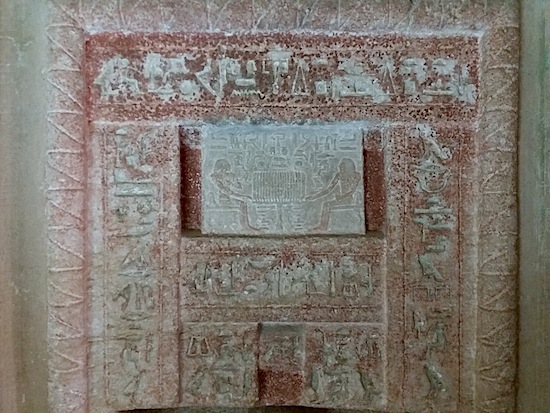
Inscribed on the false door is a dinner scene with Idu and his wife, Meretites
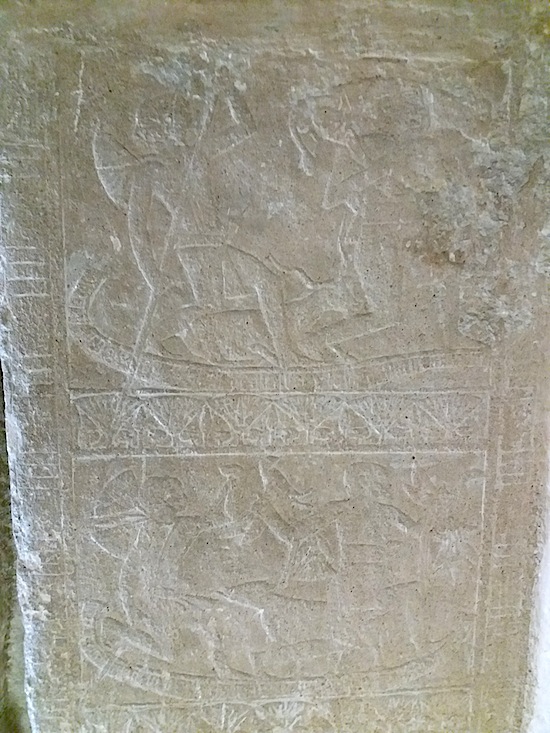
A low relief showing men bringing cattle across the marshes
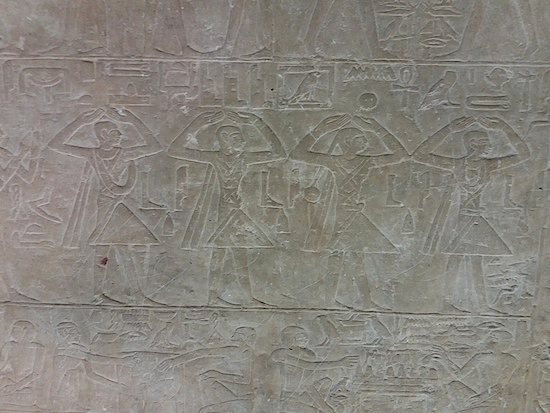
A relief showing people dancing and preparing food
All photos copyright Sean McLachlan.
Sean McLachlan is the author of the historical fantasy novel A Fine Likeness, set in Civil War Missouri, and several other titles. Find out more about him on his blog and Amazon author’s page. His latest book, The Case of the Purloined Pyramid, is a neo-pulp detective novel set in Cairo in 1919.